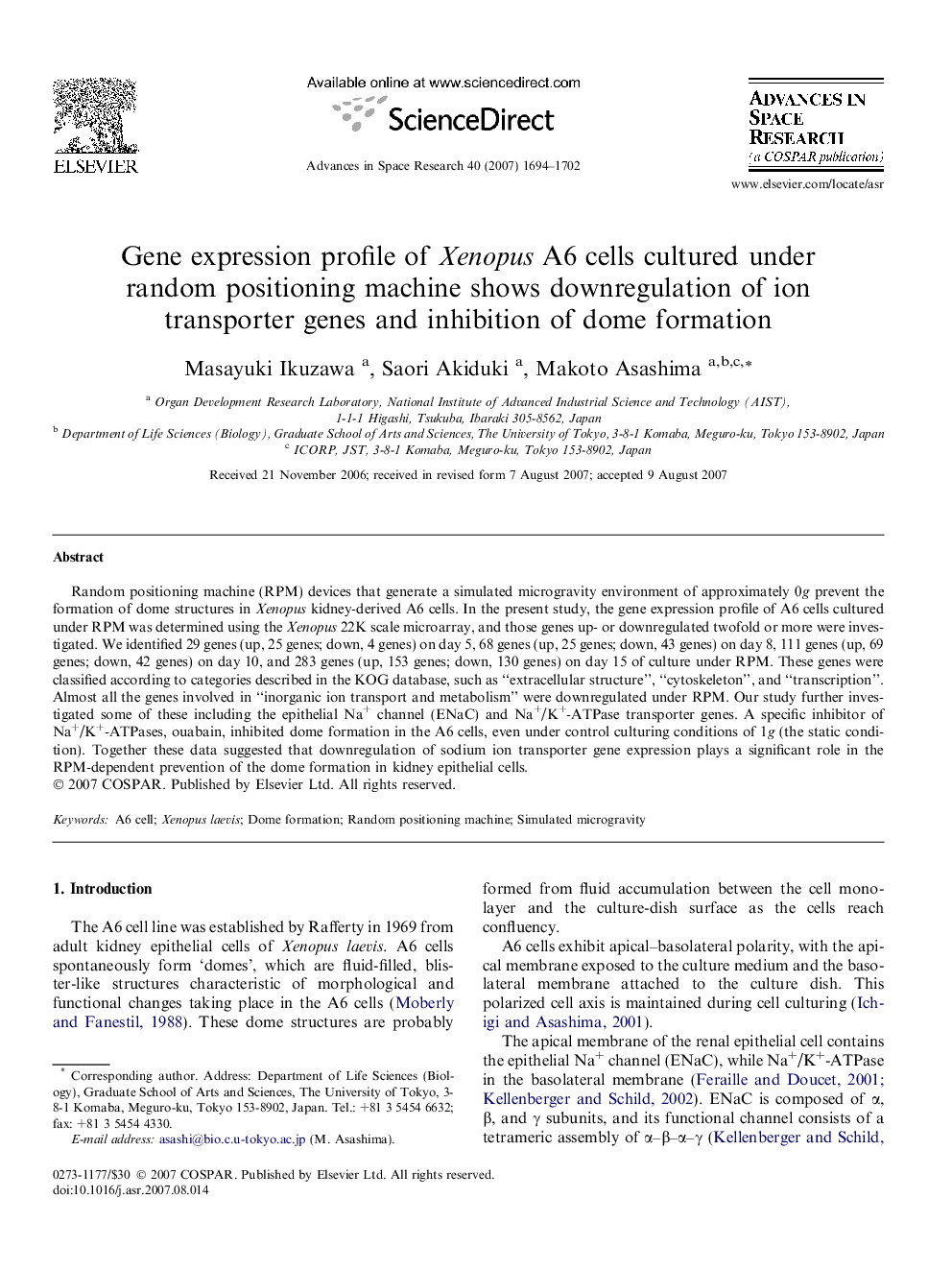| Article ID | Journal | Published Year | Pages | File Type |
|---|---|---|---|---|
| 1767821 | Advances in Space Research | 2007 | 9 Pages |
Random positioning machine (RPM) devices that generate a simulated microgravity environment of approximately 0g prevent the formation of dome structures in Xenopus kidney-derived A6 cells. In the present study, the gene expression profile of A6 cells cultured under RPM was determined using the Xenopus 22K scale microarray, and those genes up- or downregulated twofold or more were investigated. We identified 29 genes (up, 25 genes; down, 4 genes) on day 5, 68 genes (up, 25 genes; down, 43 genes) on day 8, 111 genes (up, 69 genes; down, 42 genes) on day 10, and 283 genes (up, 153 genes; down, 130 genes) on day 15 of culture under RPM. These genes were classified according to categories described in the KOG database, such as “extracellular structure”, “cytoskeleton”, and “transcription”. Almost all the genes involved in “inorganic ion transport and metabolism” were downregulated under RPM. Our study further investigated some of these including the epithelial Na+ channel (ENaC) and Na+/K+-ATPase transporter genes. A specific inhibitor of Na+/K+-ATPases, ouabain, inhibited dome formation in the A6 cells, even under control culturing conditions of 1g (the static condition). Together these data suggested that downregulation of sodium ion transporter gene expression plays a significant role in the RPM-dependent prevention of the dome formation in kidney epithelial cells.
